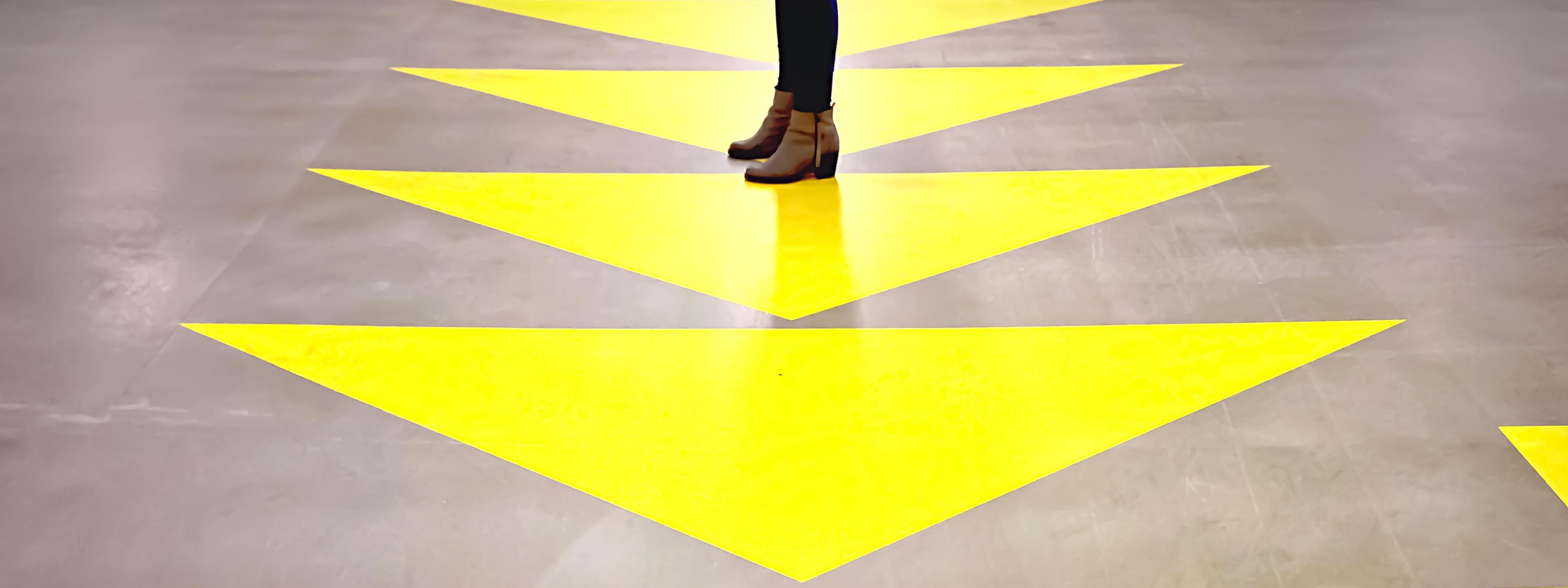
Information regarding the antidumping and countervailing duty petitions on Certain Glass Wine Bottles from China, Mexico, and Chile.
16 min read
The Petition
On December 29, 2023, the U.S. Glass Producers Coalition ("Petitioners") filed an antidumping duty ("ADD") petition on imports of certain glass wine bottles from the People's Republic of China ("China"), the United Mexican States ("Mexico"), and Chile, as well as a countervailing duty ("CVD") petition on imports of certain glass wine bottles from China. The ADD petition alleges that imports of glass wine bottles from these countries are being sold in the United States at less than fair value (that is, "dumped"). The CVD petition alleges that the Government of China is providing countervailable subsidies with respect to the manufacture, production, and export of glass wine bottles. Petitioners allege that the domestic industry has been materially injured and is threatened with further material injury by the subject imports.
1. Petitioners have defined the products covered by the petition as follows:
The merchandise covered by the investigations is certain narrow neck glass bottles, with a nominal capacity of 750 milliliters (25.36 ounces), consistent with the authorized standards of fill in 27 C.F.R. § 4.72; a nominal total height between 24.8 centimeters (9.75 inches) to 35.6 centimeters (14 inches); a nominal base diameter between 4.6 centimeters (1.8 inches) to 11.4 centimeters (4.5 inches); and a mouth with an outer diameter of between 25 millimeters (.98 inches) to 37.9 millimeters (1.5 inches); frequently referred to as a "wine bottle." In scope merchandise may include but is not limited to the following shapes: Bordeaux (also known as "Claret"), Burgundy, Champagne, or Sparkling. In scope glass bottles generally have an approximately round base and have shapes including but not limited to, straight-sided, a tapered slope from shoulder (i.e., the sloping part of the bottle between the neck and the body) to base, or a long neck with sloping shoulders to a wider base. The scope includes glass bottles, whether clear or colored, with or without a punt (i.e., an indentation on the underside of the bottle), and with or without design or functional enhancements (including, but not limited to, embossing, labeling, or etching). In scope merchandise may be imported with or without a closure, including a cork, stelvin (screw cap), crown cap, or wire cage and cork closure.
Excluded from the scope of the investigations are: (1) Glass containers made of borosilicate glass, meeting United States Pharmacopeia requirements for Type 1 pharmaceutical containers; (2) Glass containers produced by the "free blown" method or otherwise without the use of a mold (i.e., without "mold seams," "joint marks," or "parting lines"); and (3) Glass containers without a "finish" (i.e., the section of a container at the opening including the lip and ring or collar, threaded or otherwise compatible with a type of closure, including but not limited to a cork, stelvin (screw cap), crown cap, or wire cage and cork closure).
Glass bottles subject to the investigations are specified within the Harmonized Tariff Schedule of the United States (HTSUS) under subheading 7010.90.5019. The HTSUS subheadings are provided for convenience and customs purposes only. The written description of the scope of the investigations is dispositive.
2. The petition lists the following quantities and values for the subject imports:
| Imports for Consumption | Monthly data for 2020 | ||||||||||||||
| Data Row Count | 3 | |||||||||||||
| Data Type | Country | Quantity Description | JAN | FEB | MAR | APR | MAY | JUN | JUL | AUG | SEP | OCT | NOV | DEC |
| First Unit of Quantity | Chile | gross | 3,619 | 1,036 | 5,556 | 6,000 | 22,892 | 51,953 | 66,142 | 14,694 | 30,336 | 52,762 | 70,746 | 79,331 |
| First Unit of Quantity | China | gross | 526,047 | 311,029 | 100,565 | 191,209 | 58,237 | 55,050 | 98,838 | 71,269 | 99,895 | 93,721 | 81,623 | 95,451 |
| First Unit of Quantity | Mexico | gross | 190,576 | 188,108 | 239,807 | 230,381 | 219,623 | 264,253 | 286,083 | 303,858 | 311,212 | 282,090 | 275,625 | 260,371 |
| Total: | 720,242 | 500,173 | 345,928 | 427,590 | 300,752 | 371,256 | 451,063 | 389,821 | 441,443 | 428,573 | 427,994 | 435,153 |
| Imports for Consumption | Monthly data for 2021 | ||||||||||||||
| Data Row Count | 3 | |||||||||||||
| Data Type | Country | Quantity Description | JAN | FEB | MAR | APR | MAY | JUN | JUL | AUG | SEP | OCT | NOV | DEC |
| First Unit of Quantity | Chile | gross | 22,064 | 29,992 | 45,212 | 24,861 | 34,547 | 66,617 | 58,741 | 80,971 | 97,489 | 48,887 | 63,502 | 50,526 |
| First Unit of Quantity | China | gross | 109,021 | 127,469 | 129,164 | 180,033 | 149,414 | 124,545 | 96,043 | 133,727 | 119,262 | 117,384 | 144,380 | 122,196 |
| First Unit of Quantity | Mexico | gross | 298,305 | 257,011 | 296,277 | 334,556 | 261,331 | 305,633 | 297,322 | 352,213 | 310,433 | 260,500 | 276,827 | 263,725 |
| Total: | 429,390 | 414,472 | 470,653 | 539,450 | 445,292 | 496,795 | 452,106 | 566,911 | 527,184 | 426,771 | 484,709 | 436,447 |
| Imports for Consumption | Monthly data for 2022 | ||||||||||||||
| Data Row Count | 3 | |||||||||||||
| Data Type | Country | Quantity Description | JAN | FEB | MAR | APR | MAY | JUN | JUL | AUG | SEP | OCT | NOV | DEC |
| First Unit of Quantity | Chile | gross | 18,379 | 57,785 | 49,858 | 72,900 | 62,342 | 147,441 | 45,517 | 101,672 | 54,255 | 66,704 | 28,861 | 63,364 |
| First Unit of Quantity | China | gross | 176,036 | 143,900 | 152,429 | 162,574 | 221,584 | 181,917 | 163,969 | 101,811 | 139,099 | 101,503 | 105,280 | 126,384 |
| First Unit of Quantity | Mexico | gross | 248,036 | 256,483 | 286,980 | 321,453 | 305,403 | 249,687 | 236,696 | 265,666 | 242,355 | 187,088 | 237,973 | 229,652 |
| Total: | 442,451 | 458,168 | 489,267 | 556,927 | 589,329 | 579,045 | 446,182 | 469,149 | 435,709 | 355,295 | 372,114 | 419,400 |
| Imports for Consumption | Monthly data for 2023 | |||||||||||
| Data Row Count | 3 | ||||||||||
| Data Type | Country | Quantity Description | JAN | FEB | MAR | APR | MAY | JUN | JUL | AUG | SEP |
| First Unit of Quantity | Chile | gross | 61,722 | 60,596 | 74,486 | 44,726 | 30,635 | 20,587 | 18,031 | 21,532 | 25,527 |
| First Unit of Quantity | China | gross | 100,393 | 146,154 | 123,085 | 108,594 | 179,993 | 136,538 | 152,150 | 148,440 | 111,516 |
| First Unit of Quantity | Mexico | gross | 245,560 | 194,479 | 263,617 | 221,771 | 224,843 | 237,133 | 236,703 | 233,575 | 220,133 |
| Total: | 407,675 | 401,229 | 461,188 | 375,091 | 435,471 | 394,258 | 406,884 | 403,547 | 357,176 |
| Imports for Consumption | Monthly data for 2020 | ||||||||||||||
| Data Row Count | 3 | |||||||||||||
| Data Type | Country | Quantity Description | JAN | FEB | MAR | APR | MAY | JUN | JUL | AUG | SEP | OCT | NOV | DEC |
| Landed Duty Paid Value | Chile | gross | 173,761 | 59,165 | 315,970 | 323,639 | 1,292,478 | 3,002,983 | 3,787,571 | 822,819 | 1,825,265 | 2,706,148 | 3,225,298 | 4,274,417 |
| Landed Duty Paid Value | China | gross | 35,438,474 | 20592,483 | 6,680,301 | 12,901,000 | 3,641,945 | 2,895,223 | 3,834,652 | 3,787,249 | 6,662,815 | 5,966,148 | 5,016,875 | 6,693,554 |
| Landed Duty Paid Value | Mexico | gross | 11,896,311 | 11,219,863 | 12,565,755 | 11,494,573 | 13,654,233 | 15,807,677 | 15,517,197 | 18,743,466 | 16,759,106 | 15,874,602 | 15,721,929 | 12,943,490 |
| Total: | 47,508,546 | 32,171511 | 19,562,026 | 24,719,212 | 18,588,656 | 21,705,883 | 23,139,420 | 23,353534 | 25,247,186 | 24,546,898 | 23,964,102 | 23,911,461 |
| Imports for Consumption | Monthly data for 2021 | ||||||||||||||
| Data Row Count | 3 | |||||||||||||
| Data Type | Country | Quantity Description | JAN | FEB | MAR | APR | MAY | JUN | JUL | AUG | SEP | OCT | NOV | DEC |
| Landed Duty-Raid Value | Chile | gross | 1,130,656 | 1,595,487 | 2,124,452 | 1,385,779 | 1,816,227 | 3,835,351 | 3,242,005 | 4,259,855 | 5,226,914 | 2,670,264 | 3,965,829 | 3,047,082 |
| Landed Duty-Raid Value | China | gross | 5,387,782 | 7,961,592 | 10,259,060 | 12,525,740 | 10,981,305 | 9,496,079 | 7,189,955 | 11,661,240 | 9,083,564 | 10,057,527 | 12,535,204 | 10,355,575 |
| Landed Duty-Raid Value | Mexico | gross | 16,892,416 | 12,766,952 | 18,682,771 | 20,030,649 | 16,664,404 | 18,953,029 | 21,117,455 | 19,888,036 | 17,109,427 | 16,477,959 | 16,265,883 | 14,506,053 |
| Total: | 23,410,854 | 22,324,031 | 31,066,283 | 33,942,168 | 29,461,336 | 32,284,459 | 31,549,415 | 35,809,131 | 31,419,905 | 29,205,750 | 32,766,916 | 27,908,710 |
| Imports for Consumption | Monthly data for 2022 | ||||||||||||||
| Data Row Count | 3 | |||||||||||||
| Data Type | Country | Quantity Description | JAN | FEB | MAR | APR | MAY | JUN | JUL | AUG | SEP | OCT | NOV | DEC |
| Landed Duty Paid Value | Chile | gross | 866,431 | 3,474,841 | 3,243,458 | 4,973,813 | 4,002,808 | 10,685,693 | 3,627,052 | 7,648,359 | 4,158,876 | 4,824,198 | 2,099,317 | 4,652,025 |
| Landed Duty Paid Value | China | gross | 11,566,710 | 14,698,147 | 11,907,700 | 14,315,378 | 19,578,275 | 16,996,276 | 15,427,440 | 8,564,505 | 7,799,830 | 7,756,349 | 7,679,471 | 6,313,500 |
| Landed Duty Paid Value | Mexico | gross | 14,368,760 | 13,948,218 | 16,790,726 | 20,419,180 | 20,666,656 | 19,311,993 | 15,252,270 | 17,839,985 | 17,342,848 | 12,486,238 | 14,648,546 | 12,426,319 |
| Total: | 26,801,901 | 32,121,206 | 31,941,884 | 39,708,371 | 44,247,739 | 46,993,962 | 34,306,762 | 34,052,849 | 29,301,554 | 25,066,785 | 24,427,334 | 23,391,844 |
| Imports for Consumption | Monthly data for 2023 | |||||||||||
| Data Row Count | 3 | ||||||||||
| Data Type | Country | Quantity Description | JAN | FEB | MAR | APR | MAY | JUN | JUL | AUG | SEP |
| landed Duty-Paid Value | Chile | gross | 4,359,381 | 4,256,625 | 4,912,398 | 2,896,146 | 2,235,698 | 1,447,276 | 1,062,330 | 1,361,296 | 1,290,417 |
| Landed Duty-Paid Value | China | gross | 6,942,480 | 8,358,607 | 9,243,245 | 8,549,417 | 11,839,971 | 7,543,066 | 6,728,805 | 8,351,365 | 6,957,527 |
| Landed Duty-Paid Value | Mexico | gross | 14,264,995 | 12,727,043 | 17,693,181 | 16,722,188 | 18,124,725 | 21,469,386 | 20,002,722 | 19,580,316 | 18,792,757 |
| Total: | 25,566,856 | 25,342,275 | 31,848,824 | 28,167,751 | 32,200,394 | 30,459,728 | 27,793,857 | 29,292,977 | 27,040,701 |
Overview of ADD/CVD proceedings
There are two phases – preliminary and final – of ADD and CVD investigations. The Department of Commerce ("DOC") will determine whether imports of glass wine bottles from the targeted countries were dumped in the United States, and establish the antidumping duties that will be imposed. It will also determine whether the government of China subsidized exports of glass wine bottles to the United States. The International Trade Commission ("ITC") will determine whether imports of the subject merchandise are materially injuring, or threaten to materially injure, the domestic industry.
In order for final ADD and CVD to be imposed, both agencies must issue "affirmative" findings. We discuss below the steps involved in reaching such findings.
A. DOC Dumping Investigation
By January 18, 2024, DOC must decide whether the ADD petition contains the legally required information regarding Petitioners' standing, dumping, and injury to warrant initiating an investigation. The standard for initiation is low, requiring only that the ADD petition contains information that is "reasonably available" to Petitioners. Consequently, we expect DOC will initiate the ADD investigation by the January 18 deadline.
DOC will issue a questionnaire to, and calculate a dumping rate for, one or more producers in each of the targeted countries. These producers are referred to as "mandatory respondents." The decision of which producers will receive the questionnaire will be based on export volumes. DOC could choose only one producer from each targeted country to respond to the questionnaire if it is possible to account for 80%-85% of exports with just one producer. If not, DOC will choose two or more producers from each targeted country.
The companies that are selected as mandatory respondents will receive dumping rates based on their actual data. If a company refuses to respond to the questionnaire, it will be assigned a dumping rate based on "adverse facts available," which is a punitive rate, typically based on the dumping rate calculated in the petition. The dumping rates alleged in the petition vary by country, as follows:
| Country | Product Type (OBS) | Alleged Dumping Rate |
| China | US-201 | 280.10 percent |
| US-202 | 620.03 percent | |
| Mexico | US-401 | 78.55 percent |
| US-402 | 102.09 percent | |
| Chile | US-501 | 615.68 percent |
Because DOC considers China as a "non-market economy" ("NME"), DOC begins its investigation under the assumption that all exporters are part of a single, government-operated "China-wide entity," which will be subject to a "China-wide" antidumping duty margin. This margin is often based on "adverse facts available," making it punitively high. Companies that demonstrate sufficient independence from the Government of China may receive a separate dumping rate based on their actual data.
All other producers from each country (other than those that are issued the questionnaire) will be subject to each country's "All Others" Rate, which normally is calculated as the weighted average of the rates assigned to the mandatory respondents in each country.
The ADD questionnaire will request detailed information regarding US sales and home-market sales of glass wine bottles (transaction-specific prices, direct selling expenses, movement expenses, etc.) and production costs during the period of investigation ("POI"), which will be the period of October 1, 2022, through September 30, 2023. DOC will also issue multiple supplemental questionnaires to clarify information reported in the initial response. The burden of responding to the questionnaires is significantly increased if: (1) companies affiliated with the mandatory respondent also produce and/or sell the subject merchandise in the targeted countries; and/or (2) key materials used to produce the subject merchandise are purchased from affiliated suppliers.
Within 140 days after the ADD investigation is initiated (we estimate by June 6, 2024), DOC must make a preliminary determination of whether dumping exists and, if so, the estimated dumping margin for each company investigated (DOC can, and often does, postpone the preliminary determination for an additional 50 days). If DOC makes an affirmative preliminary determination, Customs and Border Protection ("CBP") will suspend liquidation of entries of glass wine bottles from the targeted countries and require importers to provide ADD cash deposits equal to the preliminary dumping margin calculated for the exporter multiplied by the entered value of the merchandise. Normally, the suspension of liquidation begins on the date DOC's preliminary determination is published in the Federal Register. However, if there are "critical circumstances," the suspension can apply retroactively to imports made 90 days before the preliminary determination is published.
DOC personnel normally visit the mandatory respondents' offices to verify the accuracy of the information provided in the questionnaire responses. This is normally done after the preliminary determination. If the questionnaire responses are incomplete or their accuracy cannot be verified, DOC will calculate dumping margins based on "adverse facts available," which normally means accepting the dumping margins calculated by Petitioners. The verification is one of the most difficult aspects of the investigation.
To verify a respondent's reported information, DOC will send a team of verifiers and require access to confidential information, including the mandatory respondents' accounting records, sales and cost systems, and other sensitive information. In recent practice, due to the COVID-19 pandemic, DOC has first required companies to provide information related to safety and pandemic-related precautions. In the event that DOC determines that it cannot conduct an on-site, in-person verification due to travel or safety concerns, it may conduct a "virtual verification" through an online platform (e.g., Webex) as an alternative.
Within 75 days after the preliminary determination, DOC will issue a final ADD determination (as with the preliminary determination, DOC can, and often does, postpone this deadline for an additional 60 days). DOC's final decision is based on the verified information, public hearings, and briefs submitted by counsel involved in the case. If a zero-dumping finding is made, or only "de minimis" levels (i.e., less than 2.00%) of dumping margin are found, the investigation ends. If DOC's final ADD determination is affirmative, the case proceeds to ITC for a final injury determination. DOC will also instruct CBP to continue to suspend liquidation of entries of glass wine bottles from the targeted countries and require ADD cash deposits at the final dumping margins determined for each exporter. Individual companies receiving zero or de minimis rates are excluded from the ADD order (if issued).
B. DOC Subsidy Investigation
As with the dumping investigation, DOC must decide whether the CVD petition contains the legally required information regarding Petitioners' standing, subsidies, and injury to warrant initiating an investigation by January 18, 2024.
DOC will then issue CVD questionnaires to the Chinese companies selected for investigation, as well as to the Government of China. Typically, DOC chooses the two or three largest foreign exporters to respond to the questionnaire. Again, these are referred to as "mandatory respondents." The CVD questionnaire will seek information about the alleged subsidies for the POI (the most recently completed fiscal year – that is, 2022), as well as for prior years. DOC will likely issue one or more supplemental questionnaires seeking clarification or additional information.
Within 65 days after the CVD investigation is initiated (we estimate by March 23, 2024), DOC must make a preliminary determination of whether subsidization exists and, if so, the estimated CVD rate for each company investigated (DOC can, and often does, postpone the preliminary determination for an additional 65 days). If DOC makes an affirmative preliminary determination, CBP will (as in the dumping investigation) suspend liquidation of entries of glass wine bottles from China and require importers to provide cash deposits equal to the preliminary CVD rate calculated for the exporter multiplied by the entered value of the merchandise. Normally, the suspension of liquidation begins on the date DOC's preliminary determination is published in the Federal Register. However, if there are "critical circumstances," the suspension can apply retroactively to imports made 90 days before the preliminary determination is published.
DOC personnel will visit the mandatory respondents' offices to verify the accuracy of the information provided in the CVD questionnaire responses. DOC will also conduct on-site verifications of the information reported by the Government of China. As in the dumping context above, DOC will first determine whether an on-site verification is feasible with respect to health and safety precautions and may conduct a "virtual verification" as an alternative to an on-site, in-person verification.
Within 75 days after the preliminary determination, DOC will issue a final CVD determination. DOC's final decision is based on the verified information, public hearings, and briefs submitted by counsel involved in the case. If a zero-subsidy finding is made, or only "de minimis" levels of subsidies (i.e., less than 1.00%) are found, the investigation ends. If DOC's final determination is affirmative, the case proceeds to ITC for a final injury determination. DOC will also instruct CBP to continue to suspend liquidation of entries of glass wine bottles from China, and require CVD cash deposits at the final subsidy rates determined for each exporter. Individual companies receiving zero or de minimis subsidy rates are excluded from the order.
C. ITC Injury Investigation
ITC is currently scheduled to make a preliminary determination (that is, the Commissioners will vote) no later than February 12, 2024. The preliminary investigation will move very quickly. The legal standard that ITC must apply in reaching its preliminary determination is very low. Essentially, ITC must issue an affirmative preliminary injury determination unless it is clear that the US industry is not being injured or is not threatened with injury. Any doubt requires ITC to continue the investigation. Because this standard is so low, it is extremely difficult to terminate an investigation at the preliminary stage. In the final injury investigation, ITC has considerably more time to conduct its investigation and consider the facts and arguments presented by the parties. The legal standard is also higher in the final phase. Therefore, foreign producers are more likely to succeed at the final stage of ITC's investigation than at the preliminary stage. Nevertheless, it can be advantageous for foreign producers and importers to participate in the preliminary phase of the investigation so they can frame themes and issues for ITC's consideration in the final phase.
ITC will base its preliminary injury determination primarily on information received in responses to the questionnaires sent to US producers, US importers, and foreign producers. Typically, the ITC circulates these questionnaires to parties within two to three business days of the filing of the petition (i.e., on or around January 4 or 5, 2024); and sets the deadline for them a week before the Staff Conference, discussed below (i.e., on or around January 12, 2024). It is important that foreign producers timely submit responses. Otherwise, ITC likely will accept Petitioner's allegations, resulting in an affirmative preliminary injury determination.
ITC Staff will conduct a conference on or around January 19, 2024. At the conference, interested parties will have an opportunity to present oral testimony and answer ITC Staff's questions. Afterwards, parties will have an opportunity to present written arguments (and supporting exhibits) in post-conference briefs, which will be due on or around January 24, 2024.
In the final phase, the ITC conducts a more thorough investigation, with a much higher standard of injury. For the final phase, the ITC crafts more detailed questionnaires for issuance to US producers, US importers, and foreign producers, as well as (unlike in the preliminary phase) for issuance to US purchasers. Before issuing the questionnaires, ITC Staff circulates draft questionnaires for the parties' comments, which is an important opportunity to ensure the questionnaires solicit information needed to support the defense. After issuing and receiving responses to the questionnaires, ITC Staff prepares a report summarizing and discussing the information and data reported in the questionnaire responses, as well as information compiled from the preliminary phase of the investigation and ITC Staff's independent research. The ITC Staff's report is important because it is a key document relied upon by the Commissioners in evaluating whether the US industry is materially injured or threatened with material injury because of the cumulated subject imports. After issuance of the ITC Staff report, parties have approximately one week to submit briefs ("prehearing briefs") presenting their arguments supporting or opposing an affirmative determination of material injury (or threat thereof). Normally one week after the deadline for prehearing briefs, ITC holds a public hearing at which the Commissioners (i.e., the decision makers) preside. During the hearing, both sides – Petitioners in support of ADD/CVD and the foreign producers and US importers/purchasers opposed to ADD/CVD – will each have one hour to make an affirmative presentation, followed by a question-and-answer session with the Commissioners. For the defense, in particular, it is critical that industry witnesses (such as importers and US purchasers) opposed to the imposition of ADD/CVD participate and testify at the ITC hearing. After the hearing, the parties have approximately one week to prepare "posthearing" briefs, which typically focus on rebutting the other side's arguments and answering specific questions raised by the Commissioners at the hearing. Several days before the date of the ITC's scheduled vote, parties have one last opportunity to submit final comments in the case. Unlike the preliminary phase, which takes place over the course of approximately six weeks, the final phase normally takes place over the course of approximately four months.
Calendar of proceedings
The table below provides key deadlines* for the DOC and ITC ADD proceedings. These dates assume full extensions of the statutory deadlines and "alignment" of the final ADD and CVD determinations.
| ITC Issues Foreign Producer, US Importer, and US Producer Questionnaires | January 4 or 5, 2024 |
| Foreign Producer, US Importer, and US Producer Questionnaires Due | January 12, 2024 |
| DOC Initiation | January 18, 2024 |
| ITC Preliminary Conference | January 19, 2024 |
| ITC Post-Conference Briefs | January 24, 2024 |
| ITC Preliminary Determination | February 12, 2024 |
| DOC Issues CVD Questionnaire | February 17, 2024 |
| DOC Issues ADD Questionnaire | February 22, 2024 |
| DOC ADD Questionnaire Response Due | March 14, 2024 |
| DOC CVD Questionnaire Response Due | March 18, 2024 |
| Supplemental ADD and CVD Questionnaire Responses | Spring/Summer 2024 |
| DOC Preliminary CVD Determination | May 27, 2024 |
| DOC Preliminary ADD Determination | July 26, 2024 |
| Verification | Summer/Fall 2024 |
| DOC Final ADD and CVD Determination | December 12, 2024 |
| ITC Final Determination | January 22, 2025 |
| Order Issued | January 29, 2025 |
* Please note dates are approximate. To the extent a deadline falls on a weekend or holiday, the event will usually occur the preceding or next business day.
White & Case means the international legal practice comprising White & Case LLP, a New York State registered limited liability partnership, White & Case LLP, a limited liability partnership incorporated under English law and all other affiliated partnerships, companies and entities.
This article is prepared for the general information of interested persons. It is not, and does not attempt to be, comprehensive in nature. Due to the general nature of its content, it should not be regarded as legal advice.
© 2024 White & Case LLP





